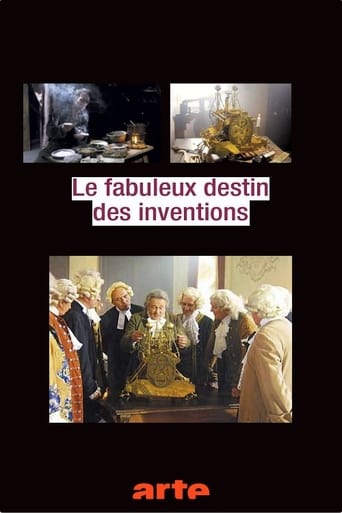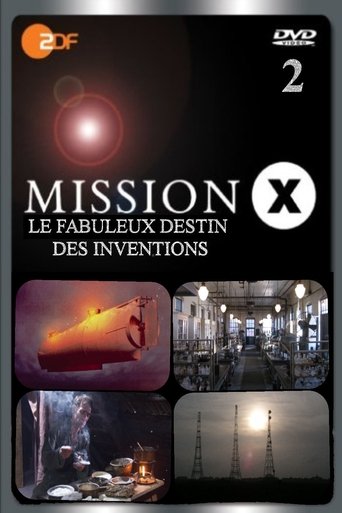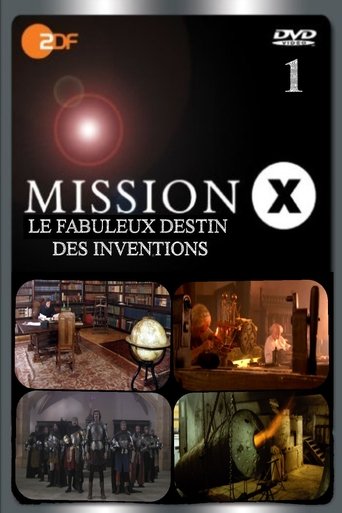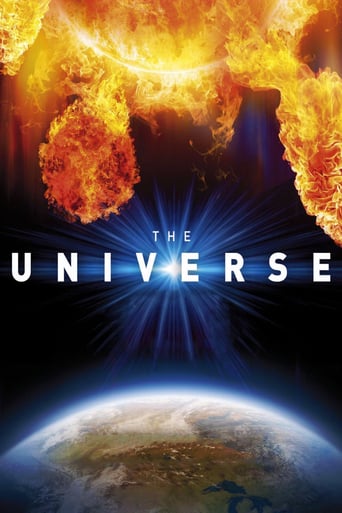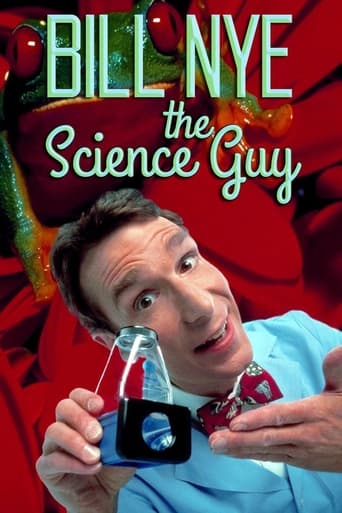Mission X Season 2

MISSION X tracks down the mysteries that triggered spectacular turning points in our history. Alert minds with the courage to go new and different ways, with ideas and a sense of adventure, created the remarkable turns of events that were responsible for making us what we are today.
Watch NowWith 30 Day Free Trial!
Mission X
2002
MISSION X tracks down the mysteries that triggered spectacular turning points in our history. Alert minds with the courage to go new and different ways, with ideas and a sense of adventure, created the remarkable turns of events that were responsible for making us what we are today.
Watch Trailer
With 30 Day Free Trial!
Mission X Season 2 Full Episode Guide
The uproar in Downing Street was considerable. Just a year after Hitler grabbed power, a new, stiff breeze was blowing across Europe and it was not good. Britain was in serious danger. The country's natural moat, the English Channel, no longer posed much of a barrier because of the new breed of faster, longer range aircraft. "England is no longer an island," Britain's concerned political leaders were saying. The government of his majesty, King George, declared air defense its highest priority. In this tense situation, the Scottish physicist, Watson Watt, came up with a revolutionary idea and set out to invent an air surveillance system using radio waves. His system would be able to identify airborne objects hundreds of miles away by night or day, rain or shine, fog or snow. His urgent task was to develop a shield against the growing signs in the 1930s that a new world war was imminent. Watt was convinced that his vision was unique. But in not-so-far-off Germany, two young engineers were tirelessly working on the same trailblazing concept. The two self-taught young men, Paul Erbslöh and Hans Karl von Willisen, were hoping that their invention in future would prevent disasters like the sinking of the Titanic. Under the watchful eye of the German navy, they were close to developing a mobile radar system. They recognized too late in whose hands they had placed their fate and were overrun by the events of history. "Duel in the Dark" is the fascinating story of scientists unknown to each other competing to develop the world's first radar on the eve of a terrible confrontation. This is a story, full of drama, disappointing setbacks, technological achievement, espionage and patriotism. What began as a vision nurtured by a few individuals would revolutionize the art of war like no other invention before it. For the first time in history, military commanders could have early information in their hands about the movements of enemy troops and strategically re-deploy their own forces accordingly. A high-ranking general said: "The atom bomb ended the war, but radar won it!" Until recently, nearly all the literature on radar gives credit to Watson Watt for inventing it, but based on completely new sources Mission X documents that radar was developed simultaneously in Britain and Germany. Here is a gripping, suspense-packed story about a previously neglected chapter in scientific history. Today, radar is more important than ever in our daily lives. Mission X provides a glimpse into what was once one of the best-kept secrets in Britain. "Duel in the Dark" goes behind the fence of one of the most heavily guarded military bases of the Royal Air Force, where no camera team has ever filmed before, to observe how an innovative radar wall along the coast of southern Spain tracks drug smugglers and illegal refugees. There are also breathtaking pictures from one of the world's most precise radar systems that can identify objects as small as two centimeters in diameter some 1,000 kilometers out in space.
It was the trial of the century. The year: 1851 - in Trenton, New Jersey. A bitter fight has erupted for the patent on a pioneering discovery. The newspapers and countless sensation seekers are following the spectacle. Charles Goodyear is fighting for the rights to his life's work: to be called the father of vulcanization. Is he the only one to have transformed natural latex into usable rubber? Latex was known ever since Columbus discovered the New World. Ca-hu-chu or Ca-ou-chuk was the name given to this milky substance from the rubber tree by the Indios of southern and central America. The word meant "tears of the weeping tree." The Aztecs of Mexico played with rubber balls and burned small rubber figurines at religious ceremonies. The Spanish conquistadors impregnated their coats with the juice. But it took until the 19th century before a real rubber boom set in. In the harsh climates of North America, however, the material was difficult to use. In winter, in grew brittle from the cold and in the hot summers it became tough and sticky and lost its form. Charles Goodyear dedicated his life to taming this material. His search for the black formula would take decades. His family was burdened with endless privations. It was an odyssey that earned him the ridicule of society and numerous stints in debtor's prison. And when he finally achieved his goal, with the formula in hand, he had to defend his patent against the criminal machinations of greedy businessmen. Goodyear's recipe for rubber had a tremendous impact on civilization, comparable to the discoveries of how to convert iron to steel or crude oil to gasoline. Today's mobile society and its most valuable industry - auto manufacturing - would not be what it is now without this revolutionary invention. Mission X examines the dramatic circumstances of Goodyear's life and re-enacts the experiments, step-by-step, that led to his trailblazing success. Without rubber, our modern age is unthinkable: airplane tires, for example, that in fractions of a second accelerate to 250 kilometers an hour and must withstand scorching heat up to 120 degrees centigrade. No other material on earth could take this kind of punishment. But it was Charles Goodyear's process of vulcanization that first gave latex the necessary properties.
When, in New York, William Kemmler, a man of German heritage, became the first person to be executed in the electric chair in 1890, it was not only the beginning for some of a dark chapter in the history of jurisprudence, but also the sorry climax of a struggle between two ingenious men for the most promising industrial market of the day. The confrontation between the inventor, Thomas Alva Edison, and the industrialist, George Westinghouse, would go down in history as the "Electricity War". Electricity was the magic word of the late 19th century. In initial attempts by Benjamin Franklin or Michael Faraday, and with the invention of electric impulses in telegraph technology, the spectrum of uses for electricity were growing continuously. After the World Exposition in Paris in 1881 and Edison's astonishing unveiling of the light bulb, new electric illumination systems became the hottest technological achievement around the globe and everybody wanted them. Electricity could replace steam to drive engines. It was a second industrial revolution. Everywhere in European and American cities power plants were sprouting up, based on Edison's design. But the limitations soon became evident. These utilities generated direct current, so it was only possible to supply energy to a small circle around the plant. Westinghouse recognized the problem right away. He invested his money into a few, large generating plants outside the cities that used higher voltage to transport the electricity over greater distances - something that was only feasible with alternating current. The competition between these two alternative utility systems developed into a bitter fight. It began with defamatory statements and, from there, moved on to slander, espionage and court battles, finally coming to a head with the public electrocution of animals to demonstrate how dangerous the other's utility system was. Mission X takes a closer look at the dramatic story of this bitter rivalry on which the standard for today's high voltage technology is based. And yet, in laboratories around the world, the next step in power generation is already being researched. In Munich, an international team of scientists is working on how to bring the sun's fire to Earth. Nuclear fusion, as it is called, is a super heated plasma fire of 100 million degrees which scientists hope will be the energy of the future. Innovative super conductors will then be able to transport the generated electricity over thousands of miles to any point on the globe with no loss of energy along the way.
On the night of February 17, 1864, eight sailors take charge of an innovative wonder machine in Charleston harbor. Their task: to sink the Housatonic, a ship blockading the entrance to the Confederacy's most important Atlantic Ocean port. Their hope: to bring about a turning point for the southern states in the American Civil War. Their weapon: The Hunley, the first operable submarine in human history. The bloody battle of fratricide, between the northern Union states and southern Confederacy, was in its third year. It was a war that cost more American lives than any other conflict - before or since. The general staff of President Abraham Lincoln wanted to strangle the rebellious south with a relentless naval blockade - its "anaconda strategy". The plan was to cut off the South from its vital routes of commerce, so that no cotton could be shipped to Europe in return for weapons and ammunition. The largely agricultural Confederacy would slowly bleed top death. One successful southern businessman and plantation owner was well aware of the impending danger. Horace Hunley recognized that the murderous struggle on land would ultimately be decided at sea. Hunley concocts a daring plan. He designs a submersible boat to break the blockade. It would carry a crew of eight, which had to climb aboard through two narrow towers. The ship weighed eight tons, was 12 meters long and only one meter in diameter. The submarine could be maneuvered by a horizontal diving plane and a vertical rudder. A propeller in the rear, hand-cranked by seven crew members, provided the necessary forward thrust, while the eighth man steered. The ship had ballast tanks to balance it and a metal keel that could be jettisoned. The "Hunley" was a primitive contraption, but with all the basic hallmarks of modern-day submarines. Still, the ship was destined to become an iron coffin for its inventor. During the night of February 17, 1864, the Hunley set out on its maiden raid and sank the Housatonic with a load of dynamite. Panic broke out in the Union fleet. But the Hunley never returned and its whereabouts remained a mystery. 130 years later, marine archeologists discovered the wreck not far from the port of Charleston. When it was finally raised, scientists were surprised how advanced the submarine's design had been. Elaborate tests were performed to find out how and why the ship went down. Mission X was at the scene when this time capsule from the American Civil War saw the light of day for the first time since that fateful night off the coast of South Carolina. One of the greatest archeological challenges of the 20th century, the newspapers wrote. Fascinating pictures document the project and the spectacular laboratory experiments conducted to unlock the mysteries of this maritime marvel - mysteries that amazed the international team of archeologists and shed new light on an incident that had a profound impact on the course of history.
Free Trial Channels
Seasons


